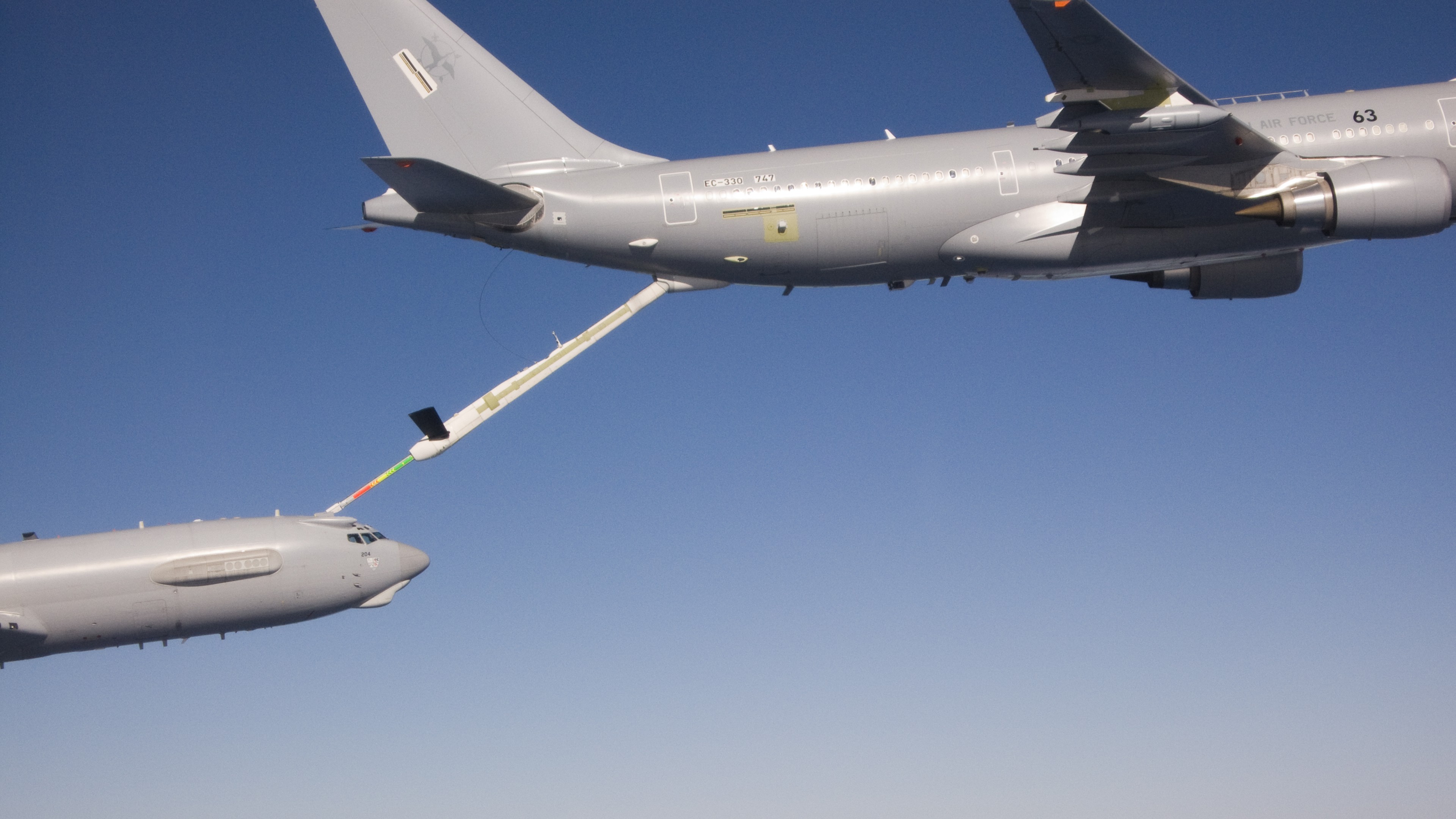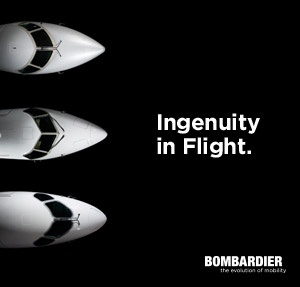LAN Peru to begin direct service between Lima and San Francisco
February 1, 2010
The Peruvian affiliate of Chile’s “model airline” has announced it will begin four-time weekly nonstop service between Lima and San Francisco in July of this year. The fourth US destination after New York, Miami and Los Angeles. According to Jorge Vilches, LAN Peru’s general manager, this is an important part of our expansion to the United States with connections to the Western United States as well as to Tokyo, Hong Kong and Seoul in Asia.
Air France has launched additional flights to the Dominican Republic
February 1, 2010
The French airline has added two weekly flights between Pointe-a-Pitre (Guadalupe) and Miami to Santo Domingo on January 31 as part of its efforts to help Haiti as a result of the earthquake. As of January 20 it has carried 450 passengers from Haiti to France.
TAM INTERESTED IN ACQUIRING PINERA’S 19% STOCK IN LAN
February 1, 2010
Brazil’s largest “model airline” is negotiating to acquire 19% shares of LAN from president elect, Sebastian Pinera. The Brazilian airline’s Frequent Flyer program,
Multiplex, is launching an IPO that could raise $688 million, part of which would be used for the acquisition. The largest airline in Brazil already has an operational alliance with the Chilean “model airline” and this investment would further consolidate the alliance according to sources in Brazil. On the other hand the Cueto group, which controls LAN, has a preferential option to acquire Pinera’s shares and is also negotiating the purchase of the stock. Obviously TAM becoming a shareholder in the largest airline group in Latin America has interesting possibilities for further consolidation in the region. The sale must be concluded before March 1 when Pinera assumes the presidency of Chile.
EMBRAER DELIVERS 100th PHENOM 100 JET
February 1, 2010
Milestone jet is the sixth to join JetSuite’s fleet
São José dos Campos, February 1, 2010 –
Embraer delivered the 100th Phenom 100 aircraft,
last Friday, to JetSuite, a U.S.-based private jet
charter company. The commemorative aircraft is
the sixth delivered to this customer.
“Delivering the 100th Phenom 100 jet just over
one year after its certification represents an
important achievement for Embraer,” said Luís
Carlos Affonso, Embraer Executive Vice
President – Executive Jets. “We are very glad to
have delivered this commemorative plane to
JetSuite and to contribute to their innovative
and expanding business.”
“JetSuite is honored to accept this special
aircraft from Embraer. We are delighted by
our partnership, and are grateful for
Embraer’s support and for the reliable,
revolutionary jet they have produced,” said
JetSuite Air CEO Alex Wilcox. “Our brandnew
Phenom 100 jets make for a much better
flying experience than our competitors’
older, less efficient aircraft, and often at half
the cost. Our customers share our love for
the Phenom. When they fly on it once, they
come back again and again.”
EMBRAER SIGNS FLIGHTSAFETY INTERNATIONAL AS TRAINING PROVIDER
February 1, 2010
Company to train pilots and flight attendants for the Legacy 450 and Legacy 500 executive jets
São José dos Campos, February 1, 2010 – Embraer has selected FlightSafety International as
the authorized training provider for Embraer’s midlight Legacy 450 and midsize Legacy 500
executive jets. The partnership also extends to the super midsize Legacy 600, the large
Legacy 650, and the ultra-large Lineage 1000, as well as the E-Jets family of commercial jets.
“When it comes to training, FlightSafety is a world leader,” said Simon Newitt, Embraer
Director of Customer Training. “We are very excited about this new contract, and look
forward to working with our partner, in order to offer customers an exceptional training
product and service.”
FlightSafety and Embraer will work together to develop new training programs, update
existing courses, and determine the timing and location of additional flight simulators,
devices, and equipment that will be needed to support Embraer aircraft operators. This close
working relationship will enhance standards and safety, as well as provide a unified focus on
customer satisfaction.
“We are honored that Embraer has chosen FlightSafety as its training provider,” said Bruce
Whitman, FlightSafety International President & CEO. “FlightSafety and Embraer share a
common commitment to enhance aviation safety and to provide our mutual customers with the
highest quality products and service.”
Embraer has worked with FlightSafety’s professional aviation training services since 1991.
The company currently serves Embraer aircraft operators at six learning centers in the U.S.
and Europe, using a fleet of 19 full flight simulators and other advanced training devices.
Cessna Activates South Florida’s First Citation Mobile Service Unit
February 1, 2010
WICHITA, Kan., Feb. 1, 2010 Cessna Aircraft Company, a Textron Inc. (NYSE: TXT) company, today announced it is fielding its fifth Citation Mobile Service Unit (MSU) to handle Citation maintenance at South Florida airports. The unit, part of Cessna’s ServiceDirect maintenance delivery group, will debut the weekend of Feb. 6-7 at Sheltair Aviation at Hollywood/Ft. Lauderdale International Airport (FLL).
“Customer response to the introduction of our new service initiatives through ServiceDirect has been superb, particularly for the Mobile Service Units,” said Mark Paolucci, Cessna senior vice president, Customer Service. “South Florida was a natural location for our newest MSU, due not only to the high concentration of Citations based here from the Keys to West Palm Beach and over to Naples, but the high number of aircraft regularly visiting the region as well.”
The newest MSU will be based full-time at Sheltair Aviation in Ft. Lauderdale, centrally located among South Florida’s busiest general aviation airfields. Like the other MSUs in service, the crew will be based locally, facilitating quick dispatch for service requests.
The Mobile Service Units are full-size service trucks equipped with tooling to perform a variety of Citation diagnostic and maintenance functions including AOG support. These units can also perform medium-sized planned maintenance events as well as engine removal.
In 2009, the in-service trucks made 541 service calls, traveling more than 70,000 miles and performing 310 unscheduled and 231 scheduled maintenance jobs. The other MSUs are based in North Carolina, Texas, Arizona, and Southern California.
Sikorsky Innovations Launched to Redefine Future of Vertical Flight
February 1, 2010
STRATFORD, Conn., Feb. 1, 2010 – Sikorsky Aircraft Corp. today launched its new technology development organization – Sikorsky Innovations – at a program attended by more than 100 government, education, business, technology and other officials at the Connecticut Science Center in Hartford. Sikorsky Aircraft is a subsidiary of United Technologies Corp. (NYSE:UTX).
The mission of Sikorsky Innovations is to develop and mature the technologies, products and processes that will redefine the future of vertical flight. The organization builds on Sikorsky’s nearly 90 years of innovation and will increase the scope of previous efforts by expanding collaborative arrangements spanning government technology agencies, academic institutions, other UTC facilities and entrepreneurial businesses where research and product development will take place in cooperation with Sikorsky’s engineers and technicians. Projects are currently under way at more than 20 locations nationwide.
As a business-focused organization as well, Sikorsky Innovations will tailor Sikorsky Aircraft processes to provide technology customers with compelling proposals that shorten execution timelines and reduce costs. Sikorsky plans to align more than $1 billion of investments and contract R&D in the organization’s work over the next 10 years. To accelerate growth of the Sikorsky Innovations global network, Sikorsky plans on expanding its collaboration and investments in small, agile high-technology companies with aligned interests. Sikorsky recently completed such an investment in Eagle Aviation Technologies LLC of Hampton, Va. Sikorsky Innovations, while a “virtual” organization, is based at the company’s main facility in Stratford, Conn.
“Sikorsky Innovations will identify our customers’ toughest, high-value challenges and create solutions by understanding the requirements, quickly maturing technology options, and demonstrating solutions in flight,” said Mark Miller, Vice President of Research and Engineering. “We are currently working on challenges in the areas of high speed flight, optionally piloted aircraft, systems that enable safe operation in blinding, brown-out conditions, and many others that only a few years ago might have been considered technologically and economically unfeasible.”
“Under founder Igor Sikorsky’s leadership, Sikorsky introduced the first practical helicopter, the first four-engine airplane, the first enclosed cockpit aircraft, and many other innovations. Pioneering the future, accomplishing firsts, and establishing world records are all in our DNA,” added Chris Van Buiten, Director of Sikorsky Innovations.
“Sikorsky Innovations is poised to continue and accelerate this legacy by engineering new process technologies that will result in new rapid-prototyping tools, advanced manufacturing automation, virtual reality simulation, high-performance computing, and many other development game-changers,” Van Buiten said.
Airbus Military A330 MRTT refuels AWACS
February 1, 2010
The Airbus Military A330 Multi Role Tanker Transport (MRTT) has passed another key milestone with the refuelling of a Boeing E-3F AWACS airborne early warning aircraft – the first time the A330 MRTT has refuelled another large aircraft.
Demonstrating the stability of this class of aircraft during air-to-air refuelling is an essential exercise to be completed not only to satisfy the certification authorities, but subsequently the operators. The E-3F is considered to be a particularly significant type because of its aerodynamic characteristics due to the large radome mounted on the back of the aircraft. The A330 MRTT passed this trial with flying colours.
The aircraft, operating from Getafe, Madrid performed a series of dry and wet contacts during two sorties with a French Air Force E-3F.
In the first flight, four contacts were performed during a 3hr 55min mission and 12.1 tonnes of fuel was transferred.
In the second flight a total of 17.5 tonnes of fuel was transferred. The flying was conducted at around 20,000ft and 250kt, and the centreline-mounted refuelling boom was used for all the transfers.
The A330 MRTT has now conducted a total of more than 200 wet and dry contacts during the development programme and transferred nearly 100 tonnes of fuel.
Antonio Caramazana, Vice President and Head of Airbus Military Derivatives, said: “This is a significant milestone in the programme. The E-3 AWACS is a challenge because of its aerodynamics characteristics due to the large radome. The AWACS crew reported that the handling of the aircraft was very smooth during the refueling operation. We are delighted with the performance of our A330 MRTT and with our advanced refuelling boom.”
ExecuJet Europe adds five wide-bodied aircraft to management fleet
February 1, 2010
The ExecuJet Aviation Group has bolstered its European fleet with the addition of seven new aircraft. Over the past few months the company has added a Challenger 300, Challenger 850, two Global Express’, one Global 5000, one Falcon 2000 and a Gulfstream 100. These aircraft are based in London, Moscow, Kiev, and Nice. With more Global Express, Gulfstream and Falcons also in the pipeline for arrival in the next weeks this takes ExecuJet Europe’s management fleet to over 50 aircraft.
Jean-Louis Cehovic, ExecuJet’s Europe newly appointed Director Aircraft Management Sales, notes that business jet owners are increasingly looking to earn revenue from their aircraft and are offering their jets for more third party charter flying this year. ExecuJet is also seeing more of their clients commit to full management packages, enabling them to benefit from the organisation’s buying power in terms of fuel, insurance, maintenance, crew training and other economies of scale.
“At ExecuJet we have developed a unique aircraft management package that makes the switching of operator a seamless process. As most of the new customers we gain have been with previous operators it is important to keep the aircraft flying while we perform all the work required to get the aircraft under a new AOC and maintain the maintenance supervision continuity,” says Cehovic.
“Tougher EU regulations are definitely driving the number of aircraft being placed under management issues such as the new rules on emissions trading – daunting for individual owners – are influencing them to partner with an expert organisation that is au fait with all the work that needs to be done,” he adds.
As part of its aircraft management package ExecuJet will schedule all maintenance work on a managed aircraft, in-house where possible or contracted out to another organisation. In the case of unscheduled maintenance through a third party (which can be costly, especially if an engine or major component needs to be replaced) ExecuJet will check all work when complete, along with the invoices, to ensure that all is in order and giving peace of mind to the client.
ExecuJet Europe’s ability to offer a client the choice of four AOCs – British, Danish, German and Swiss, is attractive, says Cehovic. “They can choose which AOC to fly on, but we always recommend obtaining independent tax advice before making the final selection.”
ExecuJet Europe also meets the mandatory new OTAR (Overseas Territory Aviation Requirements) applicable to all business jets and turboprops registered in Bermuda which came into force on 1 November last year. It is also IS-BAO certified.
Charter trends looking up
ExecuJet runs three charter offices in Europe and is pleased to report an upward trend in activity since the third quarter of last year, especially with wide cabin, long range jets. This trend has also been identified in Asia Pacific and the Middle East. The Russian market is picking up again, reports ExecuJet’s sales office in Moscow, with charter bookings especially busy over the Christmas period. ExecuJet would like to manage more aircraft in Russia. “There is a lot of potential still to be realised there,” says Cehovic.
Jean-Louis Cehovic joined ExecuJet in November 2009 from Dassault Falcon Service where he held the position of Chief Operations Officer.
Russian Helicopters Are Ready To Fight Summer Fires in America
February 1, 2010
This year, for the first time, the leading Russian design offices, managed by the Russian Helicopters holding company, will present their developments during Heli-Expo 2010 in Houston, Texas, February 21-23.
The Russian multi-role Ka-32A11BC that has been certified in major regions – America, Asia, and Europe and is regarded by leading experts as the best in its category will be featured during the world’s largest helicopter gathering.
The Ka-32A11BC is unequalled in firefighting, especially in mountainous terrain and top floors of tall buildings.
Coaxial rotors are particularly useful in firefighting (in highly turbulent atmosphere). Global experience is proving light tail rotor controlled helicopters to be inefficient in firefighting operations.
The Ka-32A11BC offers over 40 equipment options
In Canada, for instance, the Ka-32A11BC has long been the machine of choice for logging in difficult and mountainous terrain. In a number of conditions this helicopter has no alternative. Its reliability is confirmed by operations in Canada, where these helicopters have logged tens of thousands of hours without overhaul. In 2000 these helicopters were employed in firefighting operations outside of Canada (Vancouver), in the USA (Idaho).
The Ka-32A11BC has been successfully fighting fires in Mexico and Chile through several seasons.
The outstanding performance and operation capabilities of the Russian helicopters, their high reliability, easy maintenance, unique payload capacity, operating ceiling and comparatively low price make Russian helicopters an attractive proposition in the current world-wide helicopter market.
Currently Russian helicopters are operated in over 100 countries worldwide, including the USA and Canada, as well as Mexico, Brazil, Columbia, Venezuela and other countries of Latin America.
We cordially invite you to the Russian Hour which will feature a number of presentations by representatives of Russian companies and where you will be able to hear about the Ka-32A11BC and the Mi-171 helicopters.
The Russian Hour will be held on the 22nd of February, from 1p.m. until 2.45 p.m. in the Heli-Expo 2010 conference hall.
<








